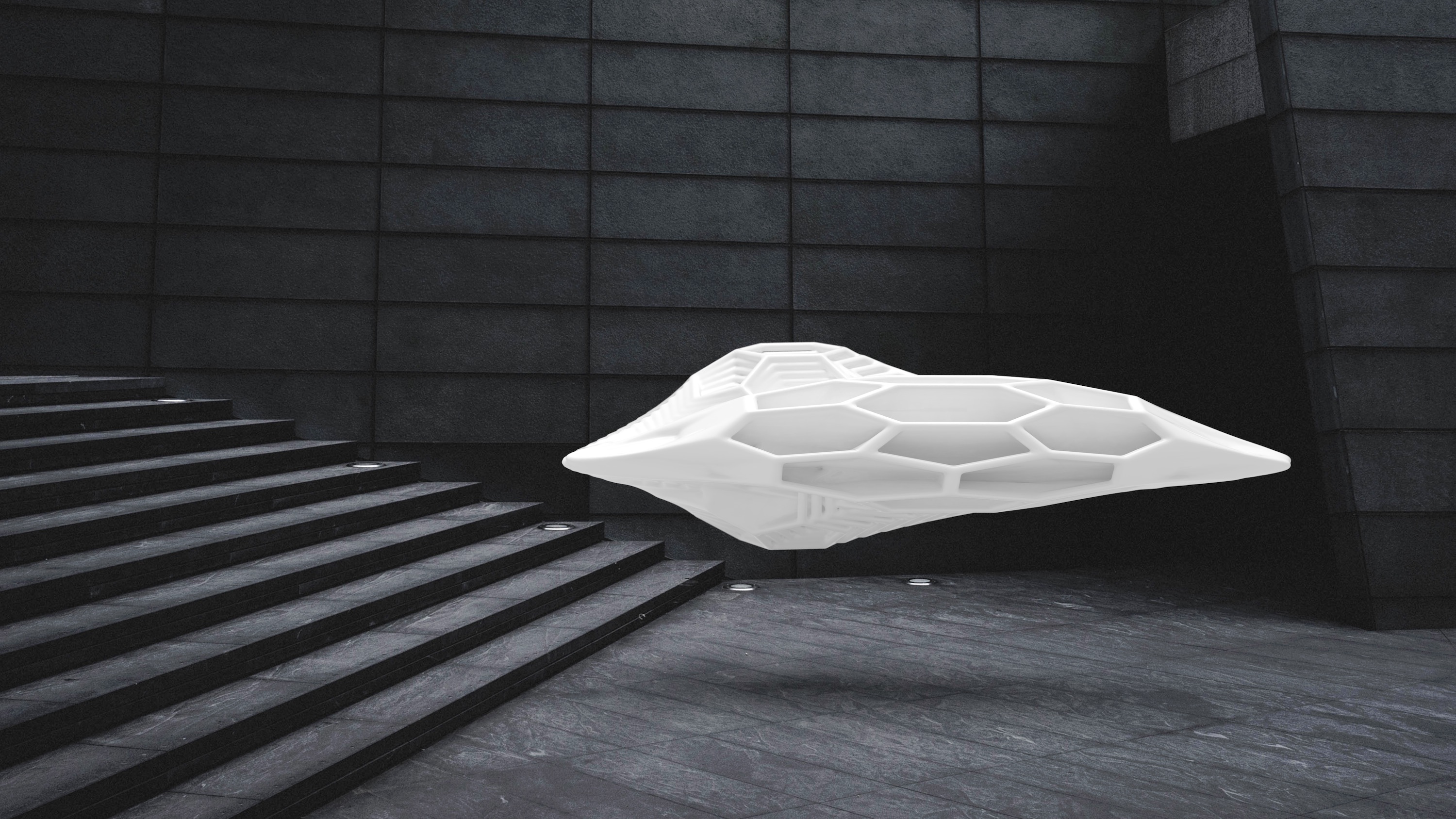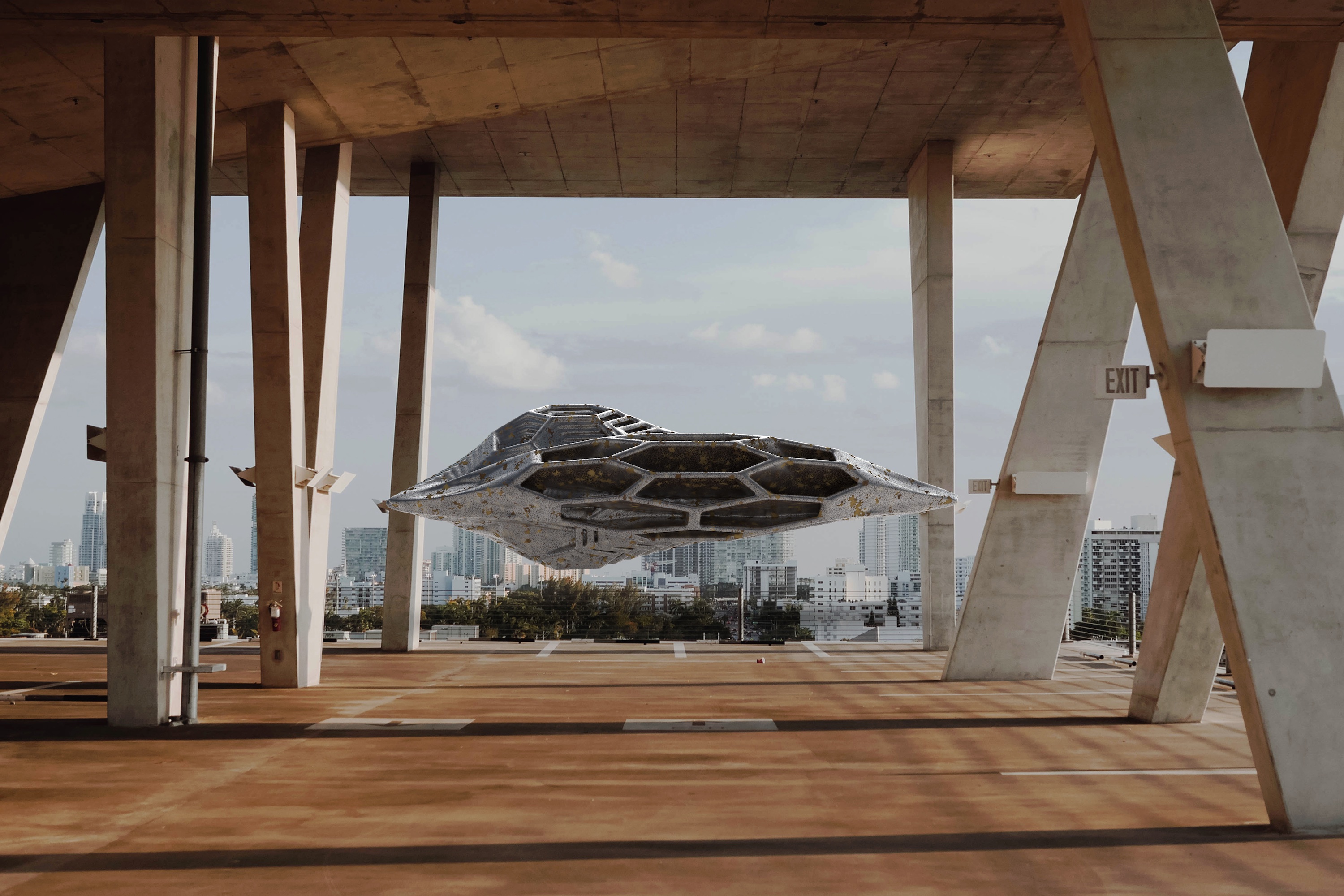Skylona
Gravity
Defying Gravity is a recurrent element in the oeuvre of Frederik De Wilde. The exploration of “space themes” in art -and cinema- allows for free experimentation in an architecture that could be imagined and designed, without reference to normal architectural conventions or subject to the influence of the force of gravity.
Gravity determines architectural form and structure. There is very little that has been developed throughout history, from early Roman vaulting through to modern steel construction that cannot be attributed to increasingly refined responses to the actions of gravity on structure and material limitations. Real architecture must function in a real world, governed by the laws of science. Gravity has also determined the way that we occupy space, and hence, the way that we have tended to design space, as well as to select surface finishes. The floor is where we walk. Walls and ceilings bound us, but we are not obliged to come into contact with those surfaces unless we so choose. Material placements have developed that respond to issues of wear and durability, again subject to gravitational orientation. Such scientific concerns have driven the design of structures and architectural systems since the notion of shelter was first conceived. Speculations during the 1700s as to the origins of architecture – including, Laugier’s “Rustic Hut”2 – all support this tradition in the development of architecture. Simply by turning relationships “upside down”, let alone removing the force of gravity, begs us to question the logic behind everything that we can see. This is what the medium of art and cinema frees designers to explore.
Science Fiction
The invention of the modern science fiction novel was not far ahead of the invention of the motion picture. It is not surprising then, that the space/sci-fi film genre has its start during the beginnings of the development of the commercial film industry, and that the scientific development of the film industry sees its needs propelled by the desire to create more compelling, and often realistic, science fiction and space environments. Miriam Allen de Ford has noted: “Science fiction deals with improbable possibilities, fantasy with plausible impossibilities.”4 And herein lies part of the blur that we see in the evolution of the Space Film genre. What might have begun in “Aelita” and “First Men in the Moon” as science based fiction in its attempts to include recognition of some of the scientific realities of space, evolved to purposefully become more fantasy based. Where Stanley Kubrick employed consultants from NASA to ensure that the environments and equipment used in “2001: A Space Odyssey” were as accurate as possible as it was his wish to have everything “intellectually justified”5, the modern” Star Wars” series of films, which although include an unending variety of innovative off-world environments, tends to tenaciously ignore any realistic or scientific portrayal of the limits that space environments bring to bear on urban environments and travel.
*Defying Gravity: Space Architecture in Film Environments, An Opportunity Lost, Terri Meyer Boake | School of Architecture | University of Waterloo


